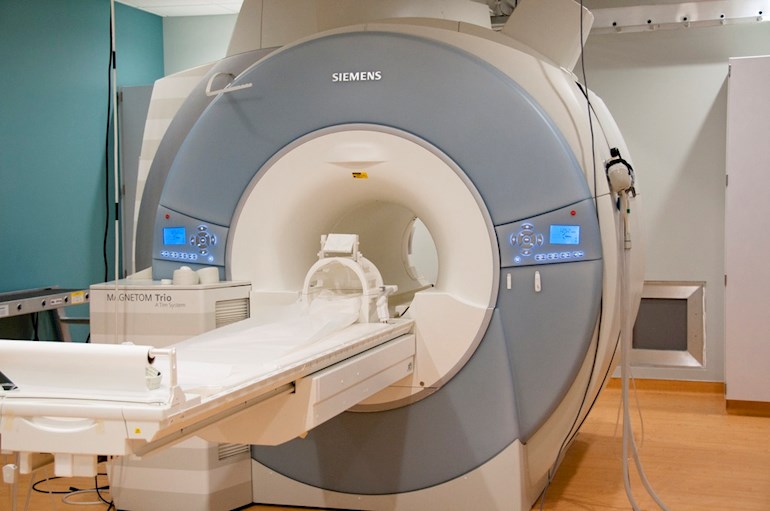J.Tempest-Mitchell
A group from Beijing have been looking at the medical literature as to whether a modified form of MRI called ‘dynamic supine’ MRI [dsMRI] might help to diagnose a greater number patients suffering from CSM (1). And their findings suggest it might!
dsMRI is a modified form of the normal imaging technique, first introduced in the 1980s. This form of dynamic MRI imaging can be carried out in the same, standard, MRI machines we use now. Images are still taken with the patient lying down in the scanner (‘supine’), but rather than just take one series of images, the spine is imaged through a range of different neck positions (‘dynamic’), so its effect on the spinal cord can be seen. The major drawer back for patients is the imaging takes even longer (the researchers in this article estimate this would be an additional 15 minutes) and holding the different neck positions may not be possible for patients, as it could exacerbate their symptoms.
Do you suffer from CSM or know someone who does? Then share your experiences to help researchers understand the disease
In this article, the researchers found thirteen previous studies comparing dsMRI to traditional MRI techniques in the diagnosis of CSM. They found that on average, dsMRI was able to identify compression that was either missed or underestimated by traditional techniques in around 20% of patients. This suggests that dsMRI may be able to measure spinal cord compression with a higher degree of sensitivity.
It should be noted that the types of studies conducted so far are at risk of bias which means that the conclusions of this study can only be hesitant. Nevertheless, these findings are interesting as they have identified clear examples of where a standard MRI may not identify any compression, yet dsMRI does. And of course, many doctors rely on ‘MRI compression’ to make their diagnosis.
Additionally given ‘basic’ MRI imaging has been shown to poorly predict the severity of CSM and therefore response to surgery, could dsMRI change this and better inform patients?
One thing is certain, more investigation is required!
References
(1) Nanfung Xu et al. Does Dynamic Supine Magnetic Resonance Imaging Improve the Diagnostic Accuracy of Cervical Spondylotic Myelopathy? A Review of the Current Evidence, World Neurosurgery dx.doi.org/10.1016/j.wneu.2....
Cervical Myelopathy

